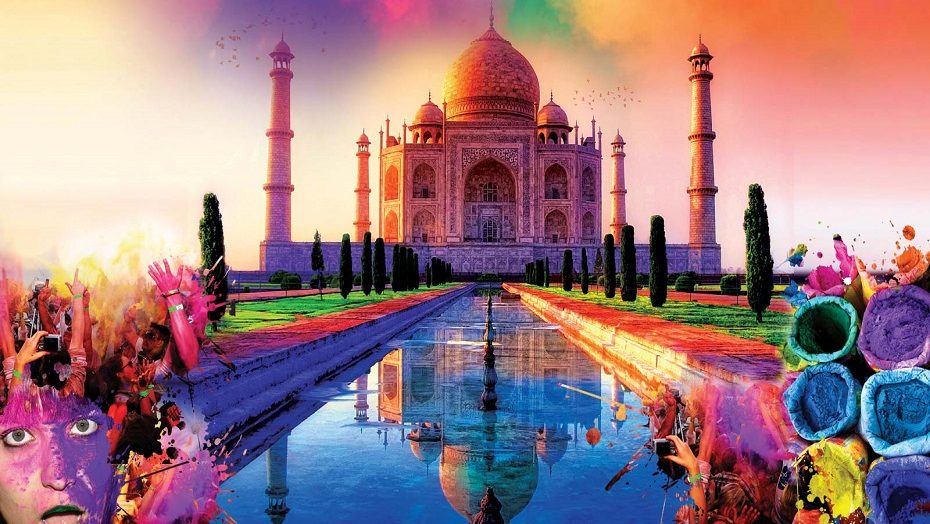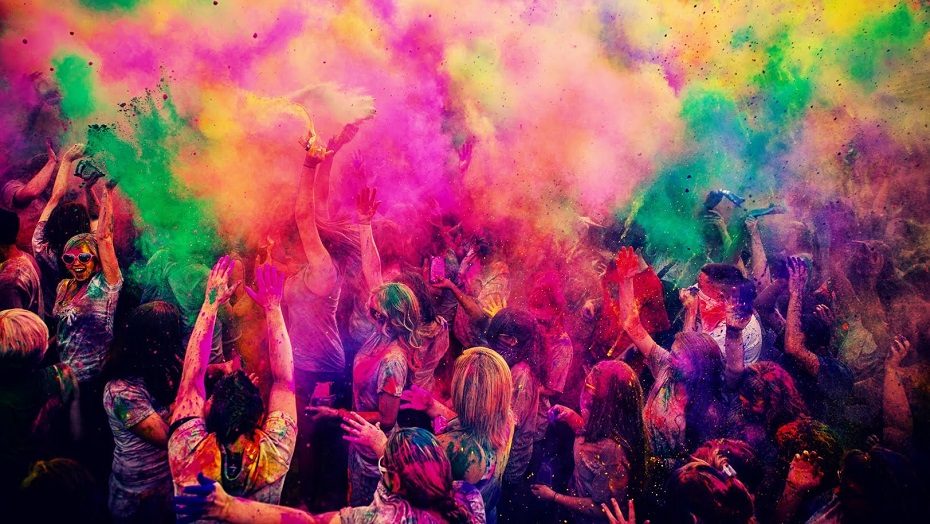Holi Festival
March 13, 2026
India and Nepal
The most boisterous of Hindu festivals, Holi waves goodbye to winter and welcomes in spring in a rainbow of colours. In India it’s predominantly celebrated in the north of the country, and is quite rightly known as the Festival of Colours for the raucous events on Holi’s final day, when children and adults take to the streets throwing colourful gulal (powder) over each other. Dyed water is shot from syringes, thrown from buckets and poured into balloons, which are then tossed at people. It’s sanctioned anarchy and, as a visitor, you’ll be a particular target so expect to finish the day looking like gulab jamun (a red, sticky Indian sweet).
Authorities urge the use of natural dyes, so they can be easily cleaned off, but you could be a mobile colour chart for days or weeks after. Though it runs for three days, Holi is mostly condensed into this final mad day. The night before, huge bonfires are lit at major crossroads in towns and cities and effigies of the demon Holika are burned to symbolise the triumph of good over evil. Whether you think good or evil comes up trumps the next day might depend just how much gulal ends up being thrown your way. There are many places to witness huge Holi celebrations. In Udaipur, the royal family hosts an elaborate function at the City Palace, while the Uttar Pradesh towns of Mathura, Nandgaon, Vridavan and Barsana are linked with the birth and childhood of Krishna, giving them special Holi significance. In Nepal, the festival is also known as Fagu and is a muted mix of India’s Holi and Thailand’s Songkran. Falling late in Nepal’s dry season, at a time when the country is heating up, water is sprayed about as a reminder of the cooling monsoon days to come. As in India, coloured powder and water (particularly red) is also dispensed, and again foreigners will get special attention.
History
Holi has been described since ancient times. A 16th century caricature of this festival had been discovered in Hampi, the capital of the Vijayanagara dynasty. Similar to this, a Holi-related inscription from 300 BC was discovered at Ramgarh, close to the Vindhya Hills.
Legends of Holi
The celebration of Holi has a variety of origin stories, including the tales of Hiranyakashipu and Prahlad, Radha and Krishna, and the ogress Dhundi.
According to the Hindu calendar, Holi falls on the Purnima (full moon day) of the Falgun month. The celebration represents the triumph of good over evil. It is celebrated one day before Holi with proper bonfire. It celebrates the killing of Holika—the sister of Hiranyakashipu. The bonfire represents the fire in which Holika, while attempting to slay Prahlad, burned herself.
Additionally, Rangwali Holi is celebrated in remembrance of Lord Krishna and Radha’s eternal love. Krishna once questioned Yashoda about why he wasn’t as fair as Radha. Yashoda playfully advised Krishna to paint Radha’s face because it would also give her a dark complexion. Then, Lord Krishna used various colors to play with Radha and the Gopis. The day has since become known as the festival of colors.
According to the ogress Dhundi tale, she was driven from Prthu by the locals after receiving a curse from Lord Shiva.
Curated Experiences
- Wear old clothes you don’t mind getting stained with colour
- Join the royal celebrations in Udaipur at the City Palace
- Experience spiritual rituals in Mathura and Vrindavan
- Witness Nepal’s fusion of Holi and Songkran
- Visit Kathmandu’s Freak Street for a throwback to the hippy trail
Video
Location




